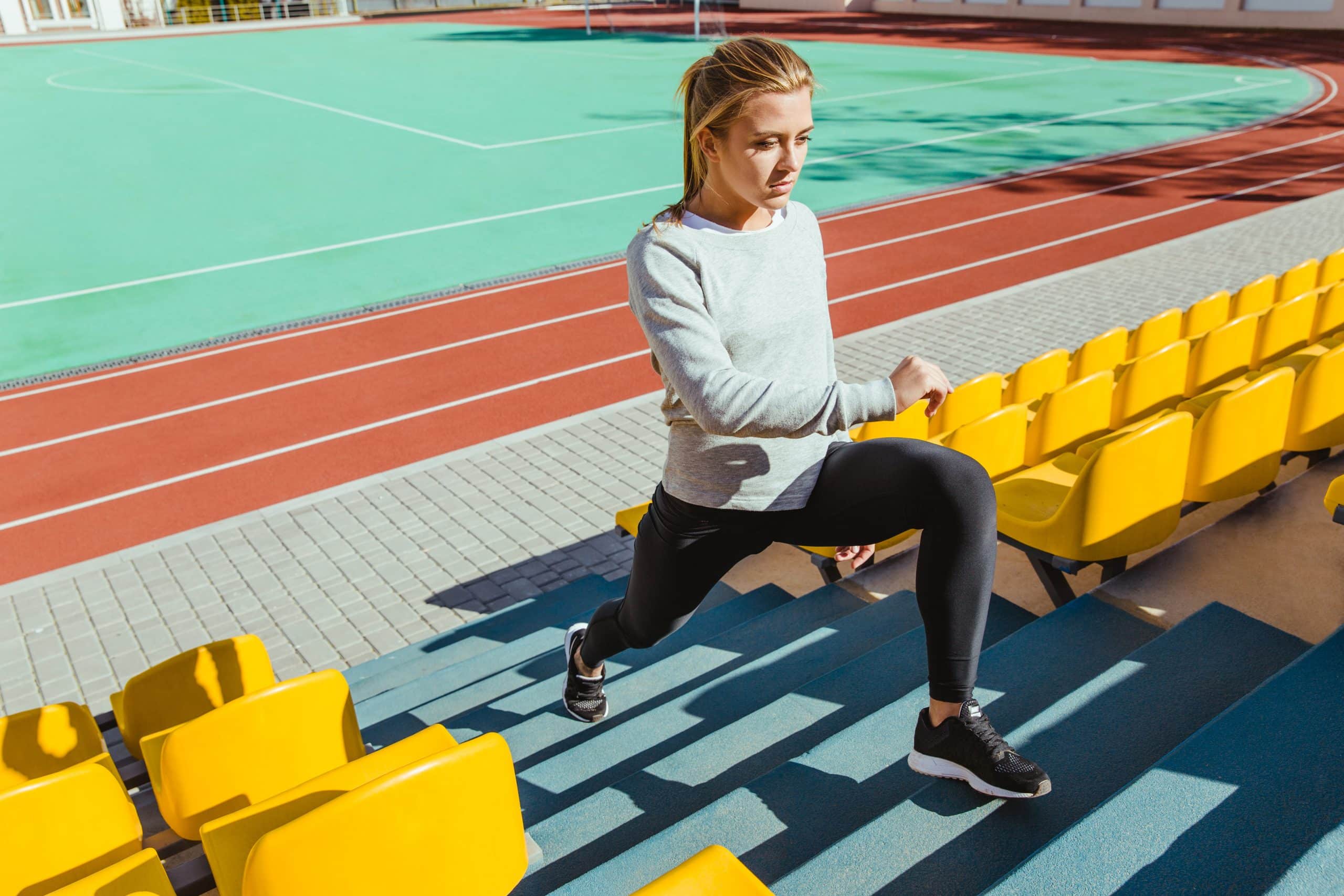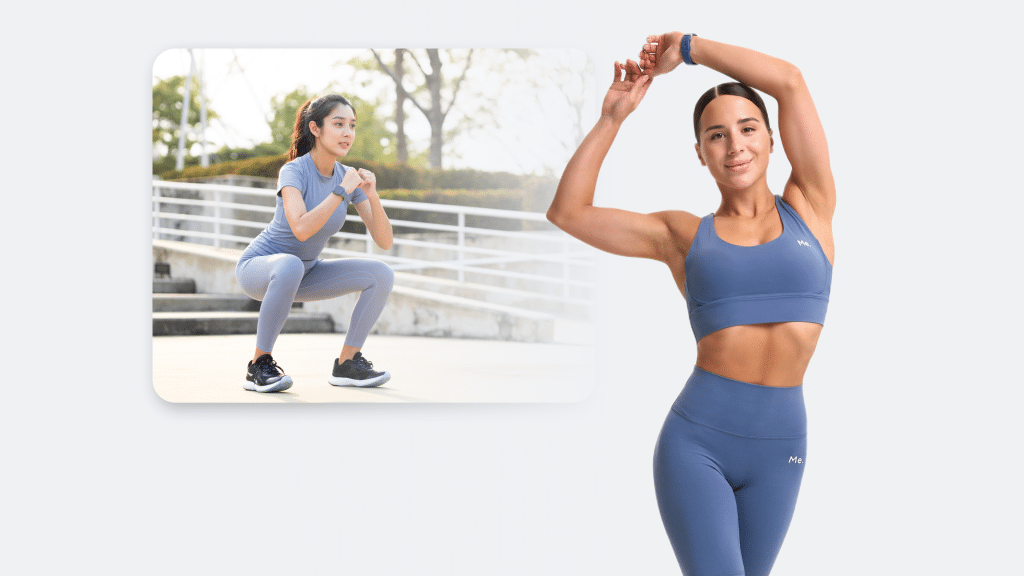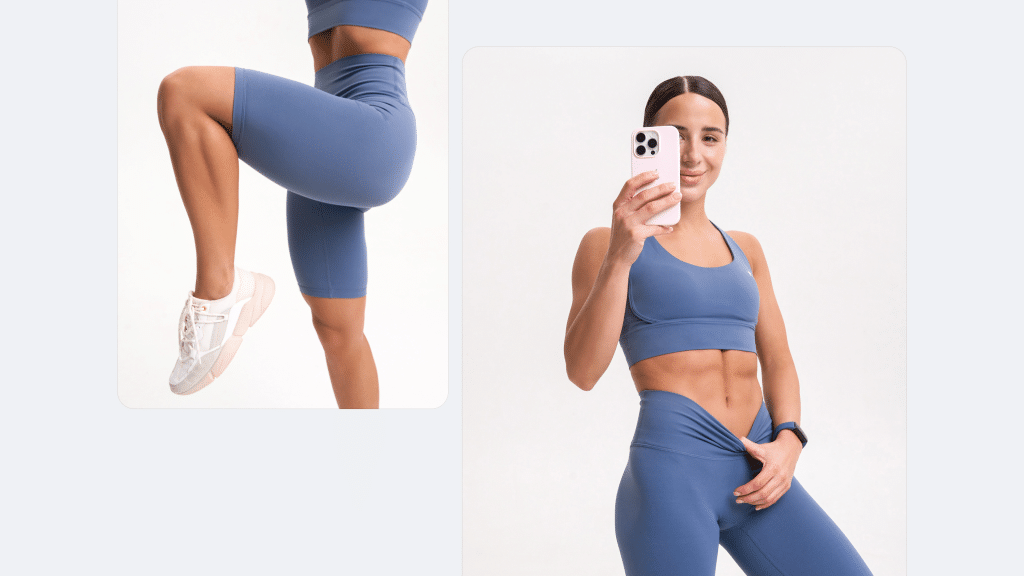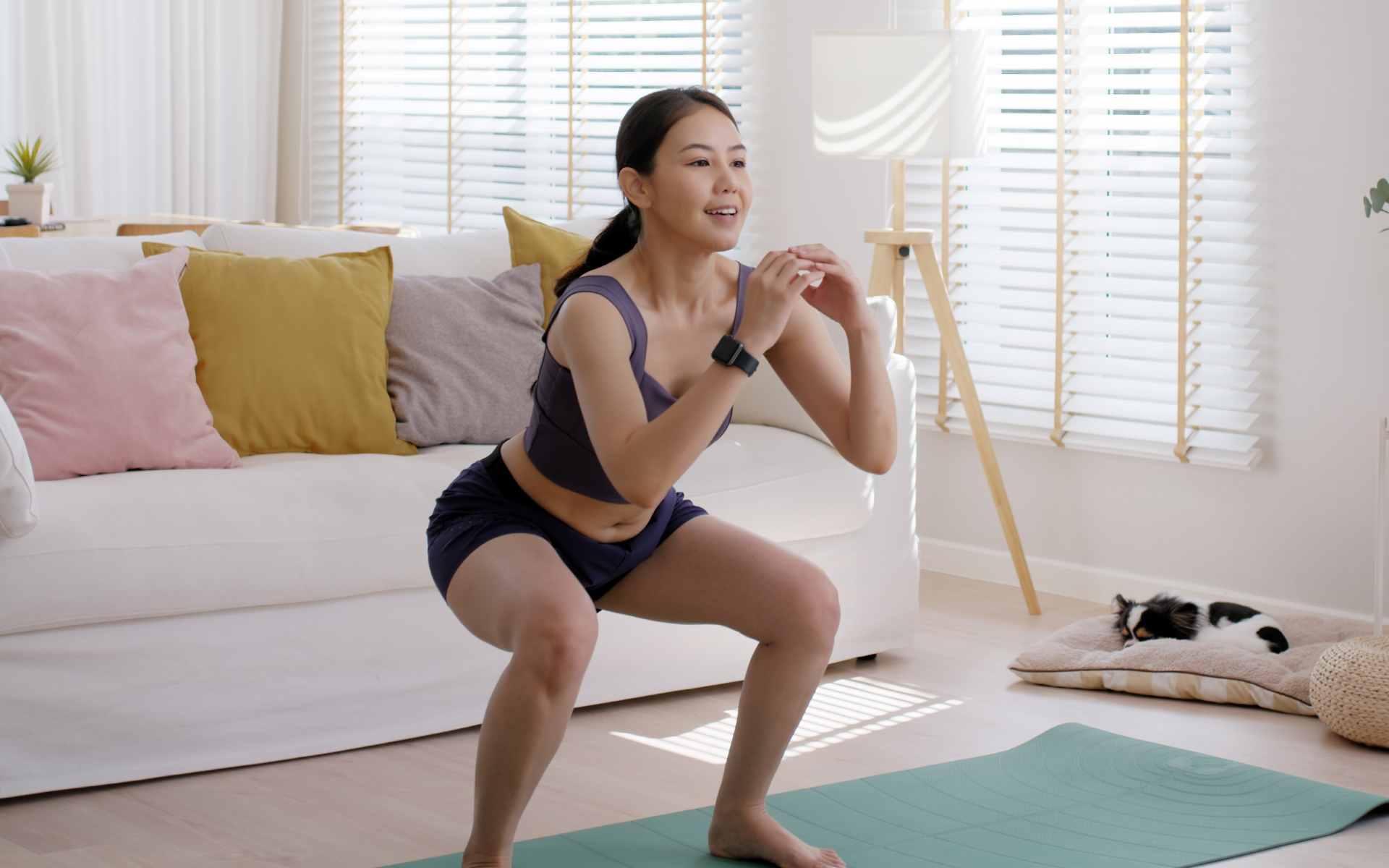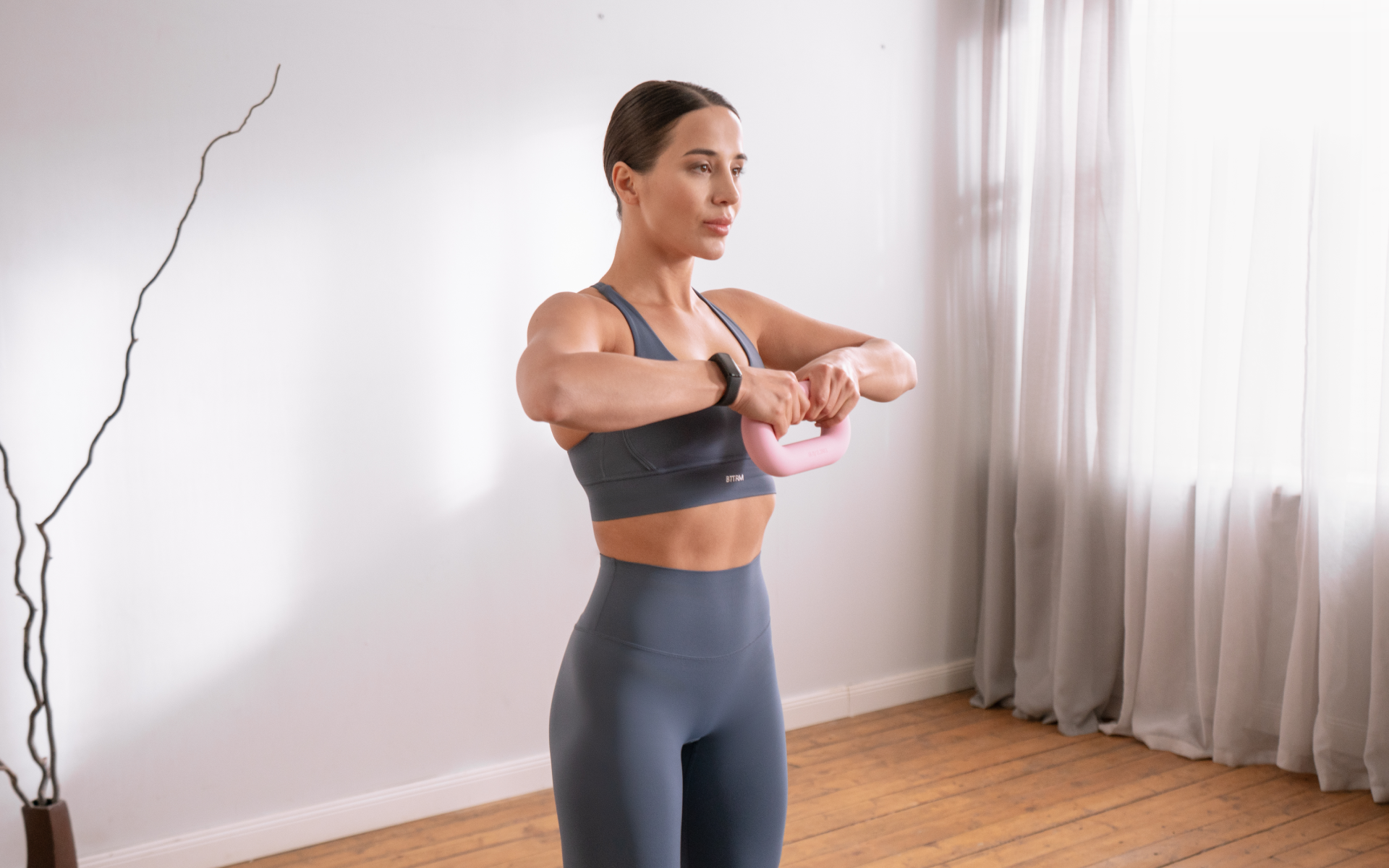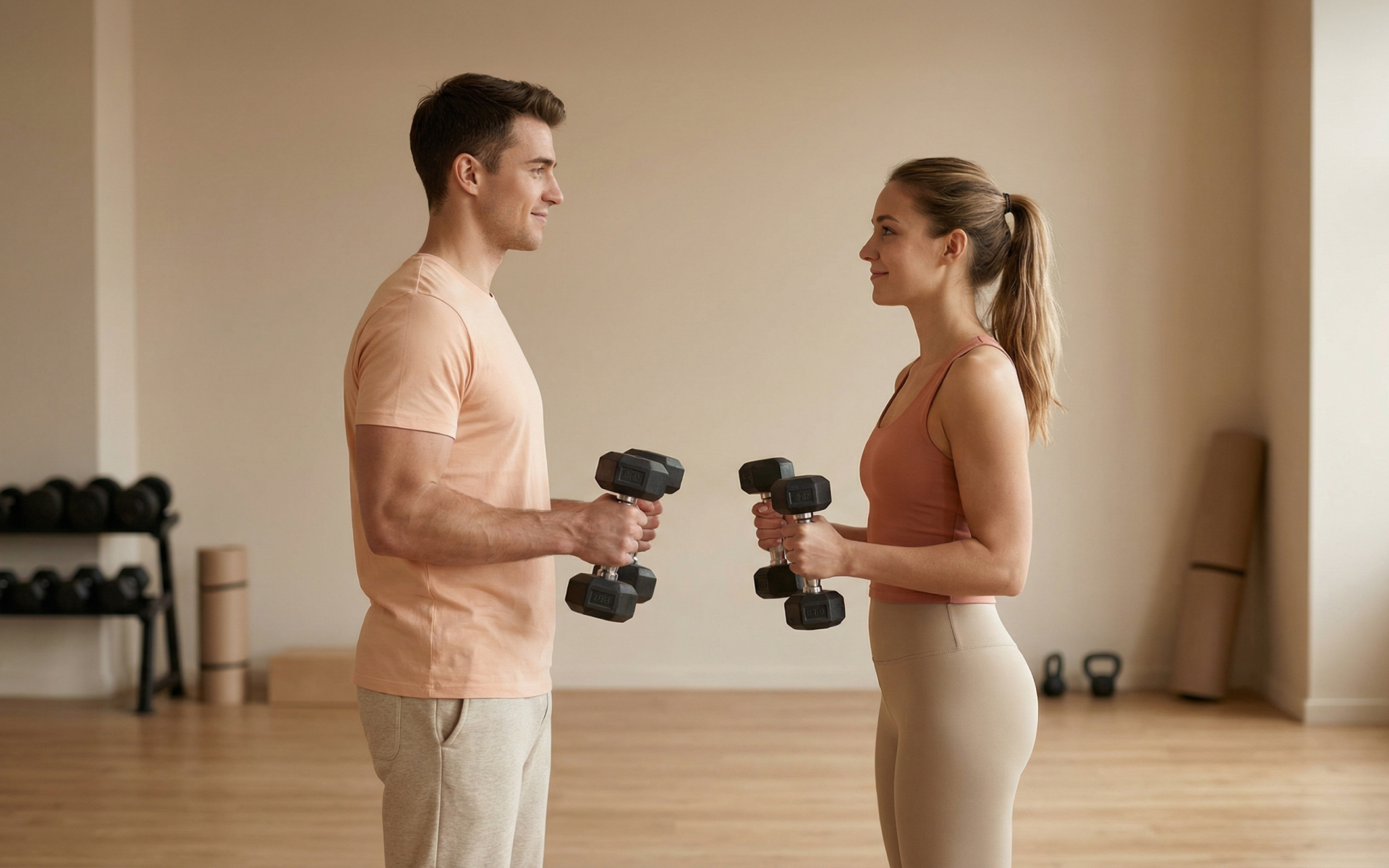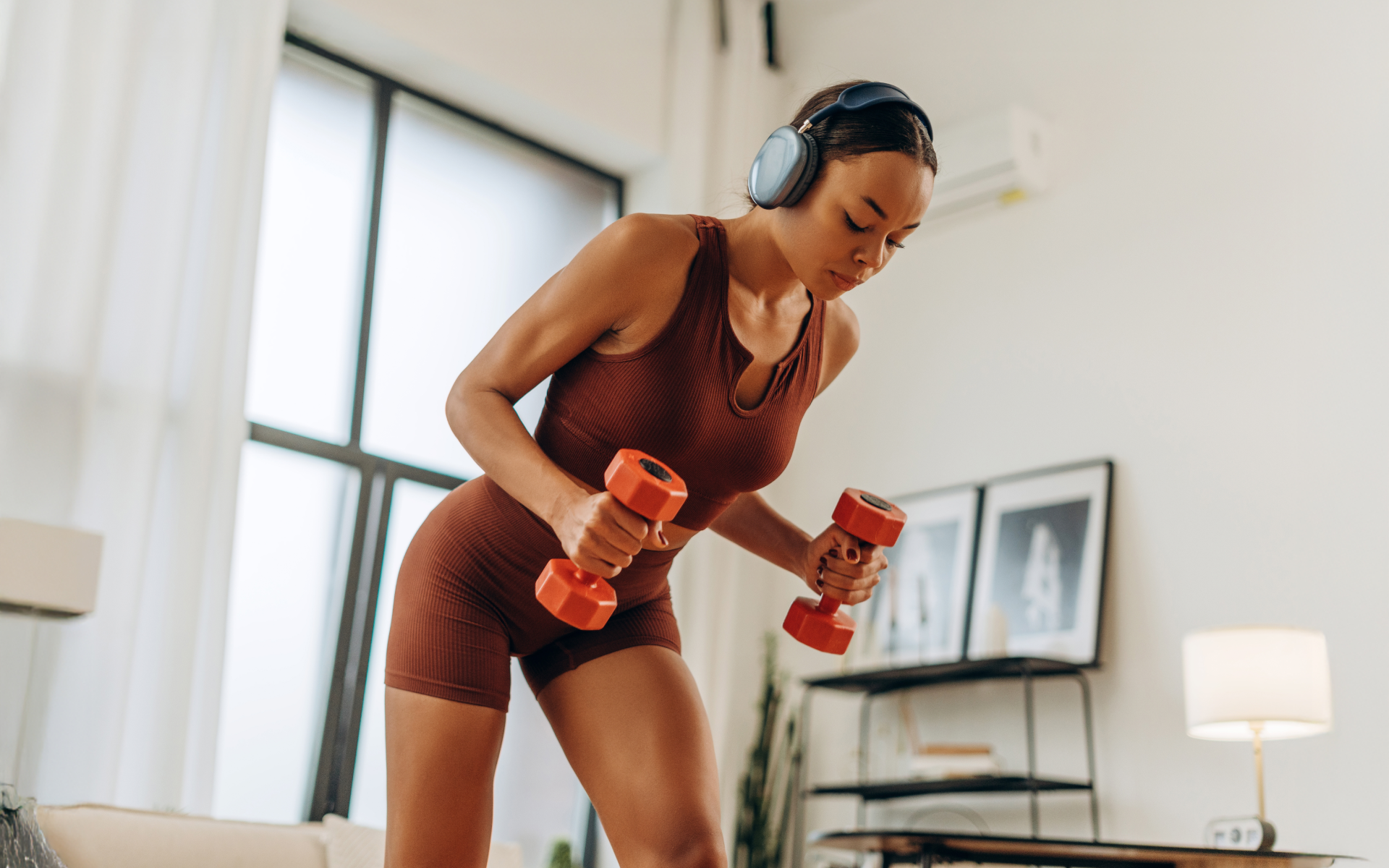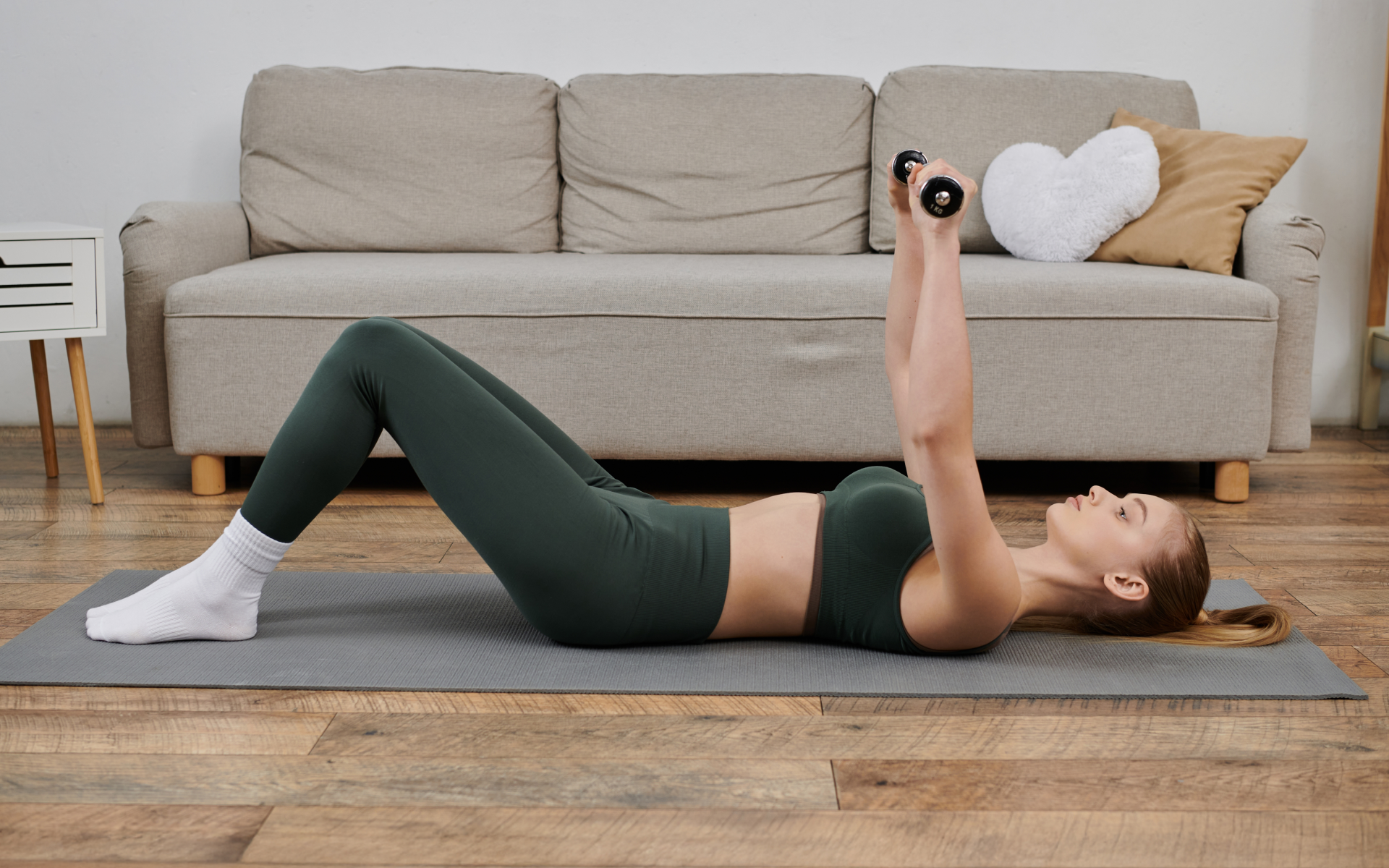Flexibility is an important component of overall fitness, but is sadly often overlooked. While cardiovascular endurance, muscular strength, and speed receive the majority of the fitness industry’s attention, flexibility is often tossed to the wayside.
In day-to-day activity, flexibility plays an important role in overall mobility – crucial for maximizing physical function. Those who lack flexibility put themselves at an increased risk of injury and may find that basic daily tasks are just a bit tougher than they need to be.
This article covers 5 flexibility exercises for beginners and some advanced movements, to help get you to the next level.
What Are the Best 5 Flexibility Exercises?
In general, research suggests that dynamic warmups are most effective before exercise, while static stretching is most effective after exercise. Dynamic warmups involve any form of physical movement that prepares your body for the upcoming activity. This is in contrast to static stretching, which is what is generally thought of when we think about stretching.
Static stretching involves holding a stretched position for a certain length of time. Although more research is needed for stronger evidence on the matter, most current research suggests static stretches should be held for a minimum of 30 seconds for any meaningful changes in flexibility to occur.
The best flexibility exercises are the ones that target your least-flexible muscle groups. For this reason, what is considered the ‘best’ is highly specific to you. For example, for a person who can sit on the ground with their legs straight out in front of them and can easily grab the heels of their feet, a hamstring stretching routine would be purely maintenance because there are no flexibility deficits that they need to improve in that muscle group.
While they can certainly continue stretching their hamstrings to ensure they stay flexible, they should spend the majority of their flexibility work on muscle groups that are more restrictive. Some individuals are even considered globally hypermobile, meaning they have too much flexibility and tissue laxity throughout their body.
For these people, stretching is neutral at best and often counterproductive. These people should spend more time focusing on stability and strength, as there is often a tradeoff between tissue laxity and joint stability.
Now that we have established that there are no universal “best flexibility exercises,” let’s discuss some accessible dynamic and static mobility exercises you can do from home, based on areas that are commonly tight for people.
Whether you’re looking to simply pep up your fitness routine, jazz up your diet with mouth-watering low-calorie recipes or want to get your act together and significantly drop that number on your scale – BetterMe: Health Coaching app has got you covered! Improve your body and revamp your life!
Walking Lunges
Target Muscles: Hamstrings, calves, quadriceps, glutes.
To perform this exercise:
- Stand up straight with your feet hip-width apart. Your hands can be placed on your hips or by your sides for balance.
- Take a step forward with your right foot, putting the weight into your heel.
- Bend both knees to lower your body into a lunge position. Your right knee should be directly above your right ankle, and your left knee should hover just above the floor.
- Hold the lunge position for a moment to ensure balance and proper form.
- Push off with your left foot to bring it forward and step into the next lunge with your left leg.
- Continue alternating legs as you walk forward, maintaining proper form with each step.
Lying Quad Stretch
Target Muscles: hip flexors and quadriceps
The steps to do this exercise are:
- Lay on your right side on the floor or on a mat. Keep your legs straight and rest your head on your right arm.
- Bend your left knee and bring your left heel towards your butt. Use your left hand to hold the top of your left foot.
- Squeeze your tummy muscles to keep your hips steady. Don’t let your hips twist.
- Gently pull your left heel closer to your butt. Keep your left thigh and knee on the floor.
- Hold this for 30 seconds, straighten your left leg and squeeze your thigh muscle.
- Perform the same on the other side.
Sitting Triceps Stretch
Target Muscles: Triceps, latissimus dorsi, posterior deltoid
To perform this exercise:
- Stand with your feet shoulder-width apart and your knees slightly bent.
- Lift your right arm overhead and bend your elbow so that your hand reaches down towards the middle of your upper back.
- Use your left hand to gently pull your right elbow towards your head. You should feel a stretch in the back of your upper arm (triceps).
- Maintain this position for 30 seconds, ensuring you feel a gentle stretch but not pain.
- Release the stretch and repeat the same steps with your left arm.
Seated Hamstring Stretch
Target Muscles: Calves, hamstrings
- Sit on the edge of a sturdy chair with your feet flat on the floor and your knees bent at a 90-degree angle.
- Straighten your right leg in front of you, placing your heel on the floor and keeping your toes pointed up.
- Sit tall and roll your pelvis forward to straighten your spine. This helps to target the hamstring more effectively.
- Slowly lean forward from your hips, keeping your back straight and your chest up. Reach towards your toes with both hands until you feel a gentle stretch in the back of your right thigh.
- Maintain this position for 30 seconds, making sure you feel a gentle stretch but not pain.
- Release the stretch and repeat the same steps with your left leg.
Read more: Stretching Exercise For Beginners: Getting Your Blood Flowing And Your Muscles Ready To Move
Child’s Pose Stretch
Target Muscles: Lumbar musculature, glutes, lats
The steps to perform this exercise are:
- Kneel on the floor with your big toes touching and your knees spread apart about hip-width.
- Sit back on your heels, resting your buttocks on your feet.
- On an exhale, lower your torso between your knees. Extend your arms forward with your palms facing down on the floor.
- Allow your forehead to rest on the mat. If it’s uncomfortable, you can place a cushion or block under your forehead for support.
- Relax your shoulders and let your body sink into the stretch. Breathe deeply and hold the pose for as long as you like, typically 30 seconds to a few minutes.
Harvard Medical School suggests stretching all major muscle groups (neck, shoulders, chest, trunk, lower back, hips, legs, and ankles) at least two or three times a week (2). To get the most benefit, hold each stretch for about 60 seconds. Stretching is also a good opportunity to practice mindful breathing and relax your mind. Deep breaths during stretching help deliver oxygen to your muscles, aiding in their recovery.
What Are the 5 Types of Flexibility?
The key to improving flexibility is understanding the correct stretching and mobility movements, and consistently applying the strategies that are most effective for you. These can help you to have a better range of motion. Essentially, there are 5 types of stretching. These include:
Active Stretching
This type of stretching is when you tighten one muscle to help stretch another (3). For instance, to stretch the back of your leg (hamstring), you can tighten the front of your leg (quadriceps) to get a deeper stretch.
Passive Stretching
This refers to when an external force is applied to muscles to modify their range of motion (4). When you let your heel hang off a step to stretch your calf, that’s passive stretching. You are using your body weight and gravity to help you stretch.
Dynamic Stretching
This stretching can be performed through full or partial range of motion. It has two categories: active dynamic stretching and ballistic dynamic stretching. Active dynamic stretching has been shown to reduce injury risk and improve performance when practiced prior to more strenuous exercise (5). Ballistic stretching, on the other hand, involves quick bouncing movements in and out of a muscle or joint’s end range of motion. It has been shown to be ineffective and is not typically recommended.
PNF (Proprioceptive Neuromuscular Facilitation)
This can be considered the ‘stretch-contract-stretch’ system. It works by leveraging reflexes to help you stretch further than you typically would be able to with typical static stretching by alternating periods of passive stretching with a contraction of the agonist or antagonist muscle groups either isometrically or isotonically.
There are several types of PNF stretching, most commonly hold-relax and contract-relax, which have been shown to be quite effective and are often used by athletes, athletic trainers, and physical therapists.
Since PNF stretching involves ‘cycles’ of stretching vs a single static hold, there is variation in the number of cycles and the duration of time each part of the cycle is held. This is dependent on the individual’s range of motion and tolerance to the technique being performed.
Static Stretching
This type of stretching involves holding the position for the desired period. Static flexibility plays an important role in overall mobility. In 2001, Chan, Hong, and Robinson performed a clinical trial that used either a 4-week or 8-week static hamstring stretching protocol (vs control groups) and found that both experimental groups had significant improvement in their hamstring flexibility (7).
However, other studies suggest that this improvement might be because people get used to the feeling of stretching rather than their muscles actually getting longer. If you’re curious about wall stretches, check out our earlier article.
The kind of stretching you choose for yourself depends on your physical capabilities. For some people, Pilates stretches can bring fruitful results, while others have more benefits when doing yoga poses for flexibility. Once you know how each stretch category works, you can discuss your exercise regimen with a certified trainer, physical therapist, or physician.
Lean and toned up body isn’t just a far-fetched fantasy. Check out the BetterMe: Health Coaching app and watch it propel your weight loss journey into high gear!
Which Exercises Improve Flexibility?
You will find several exercises that could help to improve your flexibility. A few of these are:
- Swimming: Swimming utilizes different muscle groups and requires a full joint motion range. This makes it an excellent full-body workout that enhances flexibility.
- Pilates: Pilates focuses on core strength, flexibility, and control.
- Yoga: Yoga involves various stretches and poses that target different muscle groups. The exercises promote flexibility, strength, and balance. It also includes mindful breathing that contributes to relaxation and stress control.
- Tai Chi: This gentle exercise includes slow and flowing movements that promote balance, flexibility, and coordination. These exercises are practiced for stress reduction.
A combination of exercises can help you to reach your fitness goals and improve your health. Not all exercises suit everyone, so talk to your doctor before beginning any regimen.
Read more: 10 Pilates Moves for Building Full Body Strength and Flexibility
What Causes Poor Flexibility?
Flexibility is the ability of joints and muscles to move through their full range of motion without any restrictions. Even though it varies from one person to another, minimum ranges are necessary for individuals to maintain joint and complete body health. Some reasons for poor flexibility are:
Injury or Dysfunction
Injury usually happens when a muscle or a joint is forced beyond its usual capacity. If the muscles and tendons can’t stretch enough to handle the extra movement, they might get damaged, leading to muscle strain or tendon injury (8).
Age and Gender
Young people tend to be more flexible than adults. Nonetheless, aerobic exercise, stretching, and strength training can help slow down or even reverse this age-related loss of muscle function. Generally, women are more flexible than men, but both can improve their flexibility with the right strength training program.
Activity Levels
More active people tend to be more flexible than those who aren’t. Individuals who change their lifestyles and adopt healthy practices can find themselves in a better physical condition than others who don’t.
A study by Simao found that even strength training can help untrained women become more flexible. Combining strength training with stretching exercises leads to even greater improvements in flexibility. While being active is generally better for your flexibility than being inactive, it is important to include stretching in your workout routine to keep or increase your range of motion.
When you intentionally change your life and try to incorporate flexibility exercises in your routine, you can gradually notice improvements in your physical and mental health. The Narrative Review of Existing Insights from Static Stretching Study Interventions by Raja Bouguezzi et al. has suggested that regular static stretching exercises can boost muscle strength and power, regardless of age or gender (10).
Of course, strength training has been shown to have significantly better benefits for strength and power improvements, and static stretching should be used as a supplement component of fitness in this domain.
Which Activity Builds Flexibility?
So far, we have discussed multiple activities that can help to improve your flexibility. You may simply search online for the best stretching exercises for beginners at home or subscribe to an online platform where experts teach you stretching exercises at nominal prices.
Some people may choose to enroll in yoga or tai chi lessons if they like to be social and can go to the studios. Otherwise, beginner-friendly flexibility exercises are always a good option. You might also go swimming with your friends once or twice a week. The choice of activities depends on your time, physical potential, and money you are willing to spend.
Stretching might take some time, but it’s most effective when done regularly, ideally at least two or three times a week. Even short stretching sessions of 5 to 10 minutes will make a difference. The inability for a person to touch their toes is usually a result of hamstring tightness or lumbar spine hypomobility or muscular tightness. As with many facets of health and fitness, flexibility certainly has a genetic component but is also highly lifestyle dependent. Just like strength, power, speed, and endurance, it is adaptable with training. Generally, women tend to be more flexible than men. This is partly due to differences in their connective tissues. Also, more women than men participate in activities like yoga, dance, and Pilates, all of which usually focus on improving flexibility.Frequently Asked Questions
How many minutes do you need to improve flexibility?
Why can’t I touch my toes?
Is flexibility genetic?
Why are girls more flexible?
Summary
Stretching is often overlooked when performing any workout regimen. It often becomes an afterthought compared to cardiovascular endurance and muscular strength training. All the flexibility examples discussed above show us that we can easily add flexibility exercises to our routines and receive some wonderful benefits when performed consistently. Those willing to do so can get started with the 5 flexibility exercises listed above and gradually expand their sessions to include others depending on their goals and preferences!
DISCLAIMER:
This article is intended for general informational purposes only and does not serve to address individual circumstances. It is not a substitute for professional advice or help and should not be relied on for making any kind of decision-making. Any action taken as a direct or indirect result of the information in this article is entirely at your own risk and is your sole responsibility.
BetterMe, its content staff, and its medical advisors accept no responsibility for inaccuracies, errors, misstatements, inconsistencies, or omissions and specifically disclaim any liability, loss or risk, personal, professional or otherwise, which may be incurred as a consequence, directly or indirectly, of the use and/or application of any content.
You should always seek the advice of your physician or other qualified health provider with any questions you may have regarding a medical condition or your specific situation. Never disregard professional medical advice or delay seeking it because of BetterMe content. If you suspect or think you may have a medical emergency, call your doctor.
SOURCES:
- Stretching Before and After Exercise: Effect on Muscle Soreness and Injury Risk (2005, ncbi.nlm.nih.gov)
- The ideal stretching routine (2023, health.harvard.edu)
- CURRENT CONCEPTS IN MUSCLE STRETCHING FOR EXERCISE AND REHABILITATION (2012, ncbi.nlm.nih.gov)
- Application of Passive Stretch and Its Implications for Muscle Fibers (2001, academic.oup.com)
- Potential Effects of Dynamic Stretching on Injury Incidence of Athletes: A Narrative Review of Risk Factors (2023, ncbi.nlm.nih.gov)
- Spotlight on Stretching (2012, ideafit.com)
- Flexibility and passive resistance of the hamstrings of young adults using two different static stretching protocols (2001, pubmed.ncbi.nlm.nih.gov)
- Response of Muscle and Tendon to Injury and Overuse (1999, ncbi.nlm.nih.gov)
- Muscle tissue changes with aging (2010, ncbi.nlm.nih.gov)
- Why Flexibility Deserves to Be Further Considered as a Standard Component of Physical Fitness: A Narrative Review of Existing Insights from Static Stretching Study Interventions (2023, mdpi.com)
